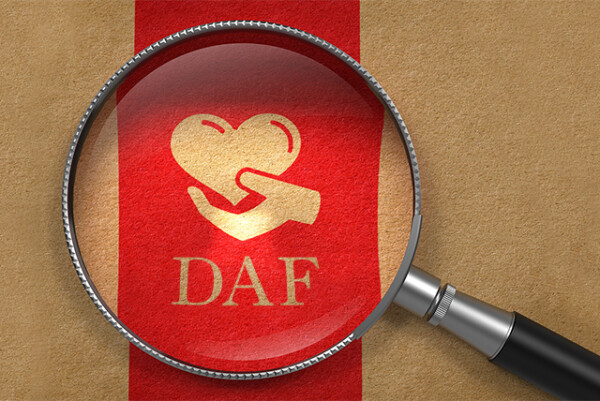August 13th, 2018
If you are not already on the lookout for gifts from Donor Advised Funds (DAFs), your organization is missing out on the potential of $85 billion (yes, that billion with a B!) that is currently sequestered in these vehicles. (See our blog, “Are you getting your fair share of $85 billion?”)
But now that you’ve made everyone at your organization aware of these vehicles, what do you do when a DAF gift arrives?
First, your organization must set up a specialized thank-you that acknowledges the DAF gift since it’s not tax-deductible. Because the gifts are directly made by the trustees (Fidelity and Charles Schwab are the largest holders of DAFs) and the donor has already received the income tax credit, the donor should receive a “soft credit” on their account …
… but a “special” soft credit should be set up in the fundraising database. Unlike soft credits from corporate matching gifts or shared credits among family members, a gift from a DAF implies a much higher potential than just the immediate gift.
The minimum deposit for a DAF is only about $5,000, but the average balance for of all giving funds is almost $300,000, placing them squarely in most organization’s mid-level or major donor programs. The first step is to treat DAF donors immediately as a mid-level prospect for upgraded treatment and communications. This would probably include a thank-you phone call from a Gift Officer, handwritten note, and—of course—running the donor through an in-house or external screening program to gauge their overall potential.
If your organization typically provides a back-end premium for support, you may wish to provide one to a new DAF supporter. Free membership, tickets, premiums and other swag (remember, swag means Stuff We All Get) are options for new donors, but any item should be tasteful and branded to the organization.
After that point, the “normal” communication stream for mid-level donors should be implemented, along with various opportunities for further engagement. Touring the facility, scheduling a face-to-face visit with an officer, invitations to special events, opportunities to underwrite major campaigns and the provision of an annual report or other in-depth materials should be used to encourage further engagement.
The minimum deposit for a DAF is only about $5,000, but the average balance for of all giving funds is almost $300,000, placing them squarely in most organization’s mid-level or major donor programs.
Although the majority of grants are made to organizations previously supported, a significant number of grants are made to new charities, so making the great first impression is critical to getting additional grants of hopefully larger amounts in the future.
Perhaps the only caveat is when a DAF grant is made for a memorial or honor gift. In that case, the donor is often not immediately engaged with your organization and is merely following through on instructions from the honored family. For these instances, a phone call to interact with the donor might be necessary to decide whether to further pursue. For example, if the charity is local (art museum, symphony, local wildlife refuge, etc.) and the DAF donor lives remotely, free passes might be a better offer than a lengthy discourse about the impact of your nonprofit on the local community. However, many DAF donors travel extensively and may welcome the opportunity to visit and become further engaged.
Finally, make sure the DAF donor is correctly identified using the name and address supplied by the trustee. Many or most DAFs are jointly owned, giving you the opportunity to engage more than one individual in your mission. Although only one person may have been a previous donor in a household, the decision-making is jointly held for dual-person DAFs, making it important to engage all members of the household and family in the process. Grown children of the DAF donors can be a potential source of future funding—if the parents are already heavily engaged, make multiple attempts to engage other family members in events or attendance to broaden your base of support.
 By Ron Bell | Managing Partner and Founder
By Ron Bell | Managing Partner and Founder
